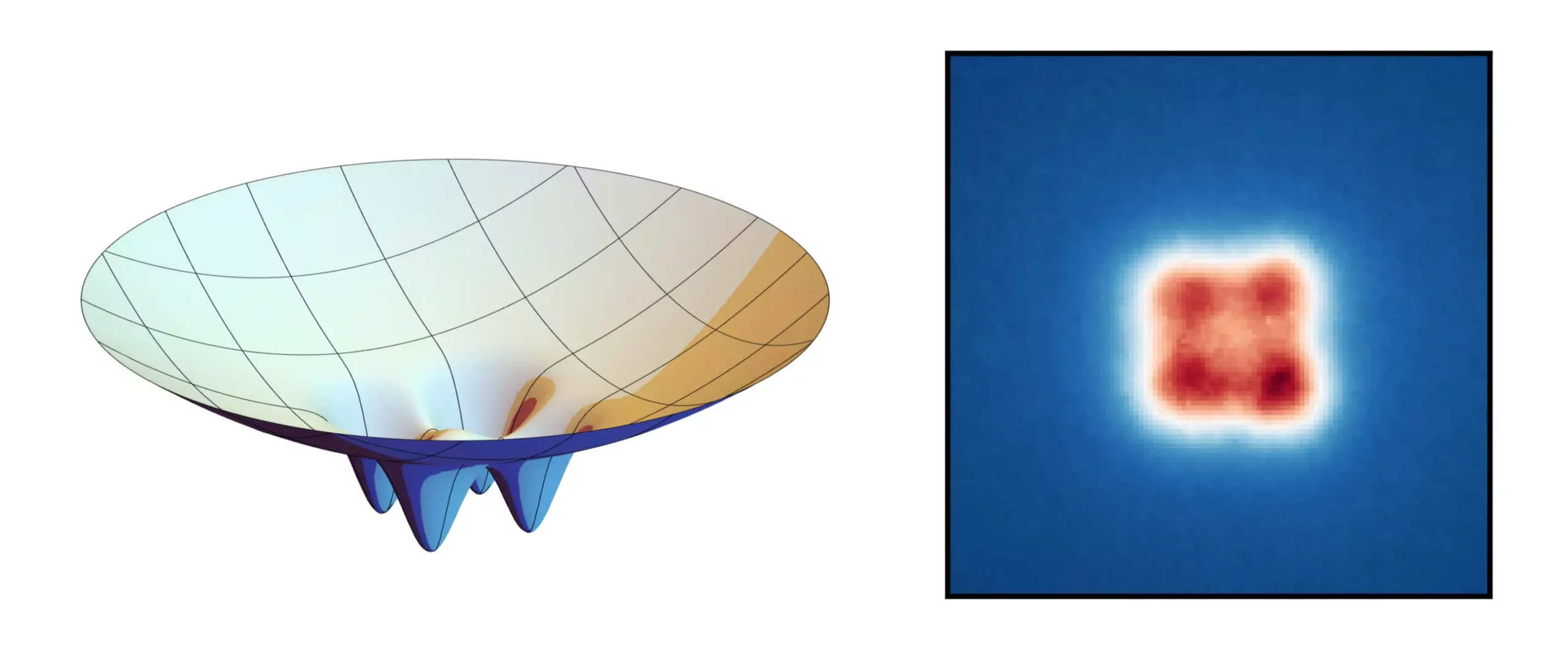The ability to manipulate light particles on a quantum level has always been a fascinating concept for scientists. Recently, researchers at the University of Bonn have made a significant breakthrough by creating a type of “super photon” through the use of nano molds. This new approach allows them to shape light particles into a lattice structure, opening up possibilities for secure communication and information exchange.
When a large number of light particles are cooled to extremely low temperatures and confined in a small space, they merge together to form a Bose-Einstein condensate. This condensate behaves like a single super photon, exhibiting unique quantum properties. Traditionally, a Bose-Einstein condensate appears as a blurry speck of light, but with the innovative technique developed by the researchers at the University of Bonn, they were able to imprint a lattice structure on the condensate.
The process of creating super photons involves filling a container with a dye solution and exciting the dye molecules with a laser. The photons produced by the excited molecules bounce back and forth between reflective surfaces within the container, gradually cooling down and condensing into a super photon. By adding small indents to the reflective surfaces, the researchers were able to create regions within the condensate where the light particles prefer to stay, similar to dividing water into several cups.
Utilizing Quantum Entanglement for Secure Communication
One of the most intriguing aspects of this research is the potential application of quantum entanglement. By positioning the cups containing the super photon closely enough to allow quantum mechanical interactions between them, the researchers demonstrated that the super photon remains as a unified condensate despite being divided into different regions. This property could be harnessed for creating secure communication channels where changes in one cup would directly impact the others.
The ability to deliberately shape Bose-Einstein condensates into multiple lattice sites opens up a myriad of possibilities for secure communication and information exchange. By varying the form of the reflective surfaces, it is theoretically feasible to create condensates split between numerous sites, making communication tap-proof for a large number of participants. This groundbreaking research has paved the way for the development of emission patterns tailored for specific applications, showcasing the potential of quantum physics in practical scenarios.
The research conducted at the University of Bonn represents a significant advancement in the field of quantum optics and photon manipulation. The creation of “super photons” with specific lattice structures has demonstrated the potential for revolutionizing secure communication methods and information exchange. By harnessing the power of quantum entanglement, researchers have opened up a new realm of possibilities for utilizing Bose-Einstein condensates in real-world applications. The future of quantum communication looks promising, thanks to the innovative research and findings presented in this study.


Leave a Reply
You must be logged in to post a comment.